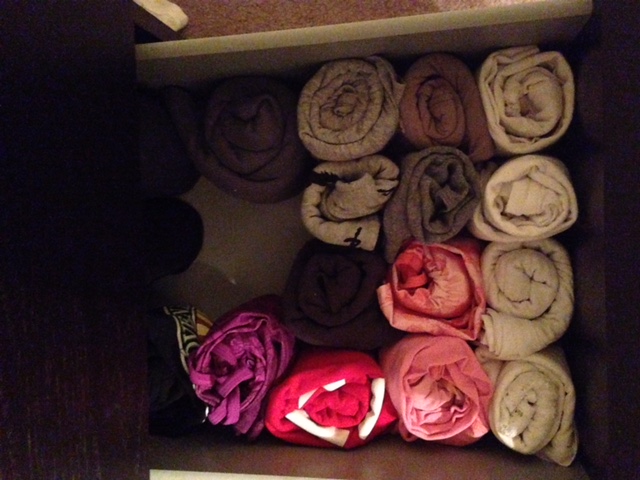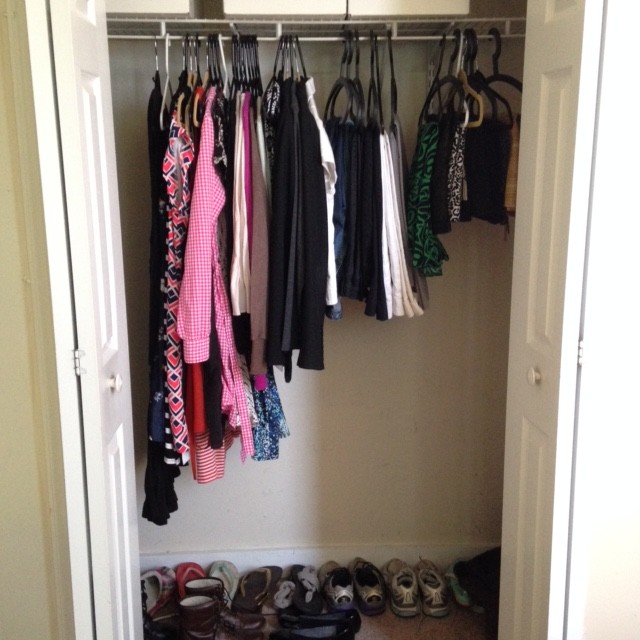Upon graduating from Yoga District’s 200 Hour teacher training in winter of 2013, Kelly has been teaching weekly classes at YD. We are honored to share her holistic spring cleaning approach and workshop with you to jumpstart a nourishing spring season. Please read on to hear more from Kelly, check out her yoga classes on the schedule, and consider attending this Saturday for workshop on guided spring cleaning.
“We are not going to change the whole world, but we can change ourselves and feel free as birds. We can be serene even in the midst of calamities and, by our serenity, make others more tranquil. Serenity is contagious. If we smile at someone, he or she will smile back. And a smile costs nothing. We should plague everyone with joy.” -Swami Satchidananda, The Yoga Sutras
You may have heard about the New York Times’ best-seller, The Life-Changing Magic of Tidying Up: The Japanese Art of Decluttering and Organizing. (Yesterday I covered the basics of this method, so check that out for the practical steps.) I recently purchased this book and set out on my personal endeavor of decluttering my home. I had high hopes, and ultimately it exceeded my expectations. But as I made my way through the book and then through the process, so many aspects of my existing yoga practice and trainings began to rise to the surface. Because what’s there isn’t some new-fangled way of keeping my house neat. Underlying this method, for me, there is yoga.
True joy. It’s what each and every one of us wants to find and share in our lives. But how often do we apply this desire for joy to each and every object in our possession? I’ll admit I hadn’t done this until just a couple weeks ago. By Marie’s method, you assess each one of your belongings and you ask yourself, does this bring me joy? It’s a powerful perspective-shifter, because it cuts through the clutter and forces you to look with honesty at yourself. After I discarded what no longer brought me joy from my bedroom, I was left with so much less, yet so much more of what I loved.
Non-attachment. The practice of non-attachment is a critical element of the yoga sutras and of living a happy and fulfilling life. Non-attachment is also inherently at the very core of any decluttering endeavor. When you consider whether or not to discard something, and you are conflicted, it’s often because you are either a) attached to a memory of the past or b) fearful for a situation in the future. Both of these are forms of attachment. By decluttering an item that brings about this attachment, we can process the attachment. We can process the painful memory, the longing to be a certain size, the desire to be with someone who is no longer in our lives. And we practice letting it go, knowing that it does not serve us, so that we can be in the present, not the past or future.
Aparigraha. This is the virtue of non-possessiveness and non-greediness, it’s the fifth out of the Yamas of the yoga sutras. My favorite story of Aparigraha is one that Adam Frei told one day at a class at Yoga District. It was about Sri Dharma Mittra and he was saying how while Dharma had been travelling around, everywhere he went people would give him T-shirts. Dharma basically said, I don’t need all these T-shirts, all I need is maybe two or three, enough to have one to change into before I can wash the other. So he began giving away these T-shirts to other people. That’s an example of Aparigraha, just keeping what you need to get by, plus a small reserve for emergency. It’s another great reason to declutter and figure out what exactly you do need, and what’s simply excess stuff holding you back.
Ahimsa (non-violence and unconditional kindness). You might be wondering, what on Earth does cleaning your house have to do with practicing non-violence? I’ll explain. One of the underlying elements of keeping a tidy home is that you develop a “relationship” with the objects that you own, whether it’s your house as a whole, or something as simple as a pen. When you think of your belongings as things you have to nurture a relationship with, you are more aware of them, you take better care of them, and you treat them with kindness. According to Marie’s method, this respect is crucial for maintaining a tidy home. But beyond that, when we practice Ahimsa for something as simple as a non-living object like a pen, we condition ourselves to apply that same kindness to the people, animals and other living things around us. So in a sense, teaching a toddler to always put their toys away when they’re finished is one of their first mini lessons in practicing Ahimsa!
Gratitude. Chances are, if you are reading this right now, you have a safe, comfortable home to call your own at the end of the day. Whether it’s a large house, a tiny apartment, a tiny room in a large house, a boat-home (fun!), or somewhere in between–there is a space you can go to just be at the end of the day. How often do we take the time every day to show gratitude to that space? How often do we say aloud or in our head, “thank you home, for giving me shelter and keeping me safe.” For perspective, there are over 7,000 homeless individuals in D.C. alone who do not have the privilege of going home at the end of the day. By keeping only those items we need, and donating what we do not with an attitude of gratefulness, we open ourselves up both financially and spiritually to contribute positively to others who don’t have the same things. These are the types of small actions that can add up to make a bigger difference.
On that note, if you’re at all intrigued by any of these concepts, I would love to have you at our upcoming workshop on Decluttering Your Home & Mind, an all-levels spring cleaning workshop plus clothing swap! So you can do your decluttering, bring your discarded clothing and we’ll have a swap after class, with unclaimed items going to Martha’s Table on 14th Street. Or, just bring yourself and tackle the tidying later.
Best of luck with your spring cleaning, I hope it changes you as much as it did me!



